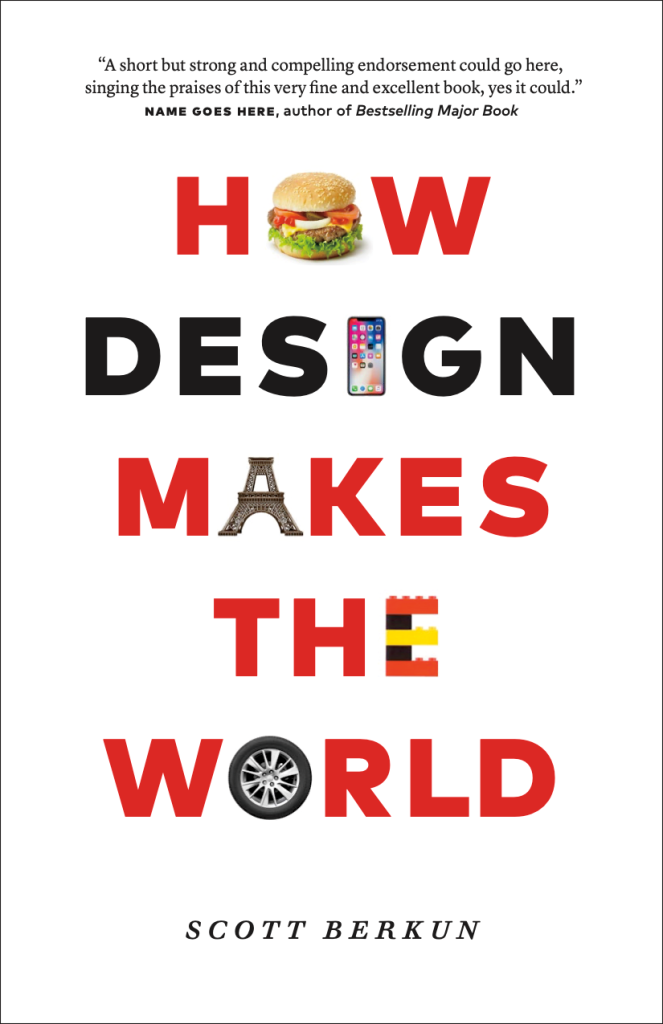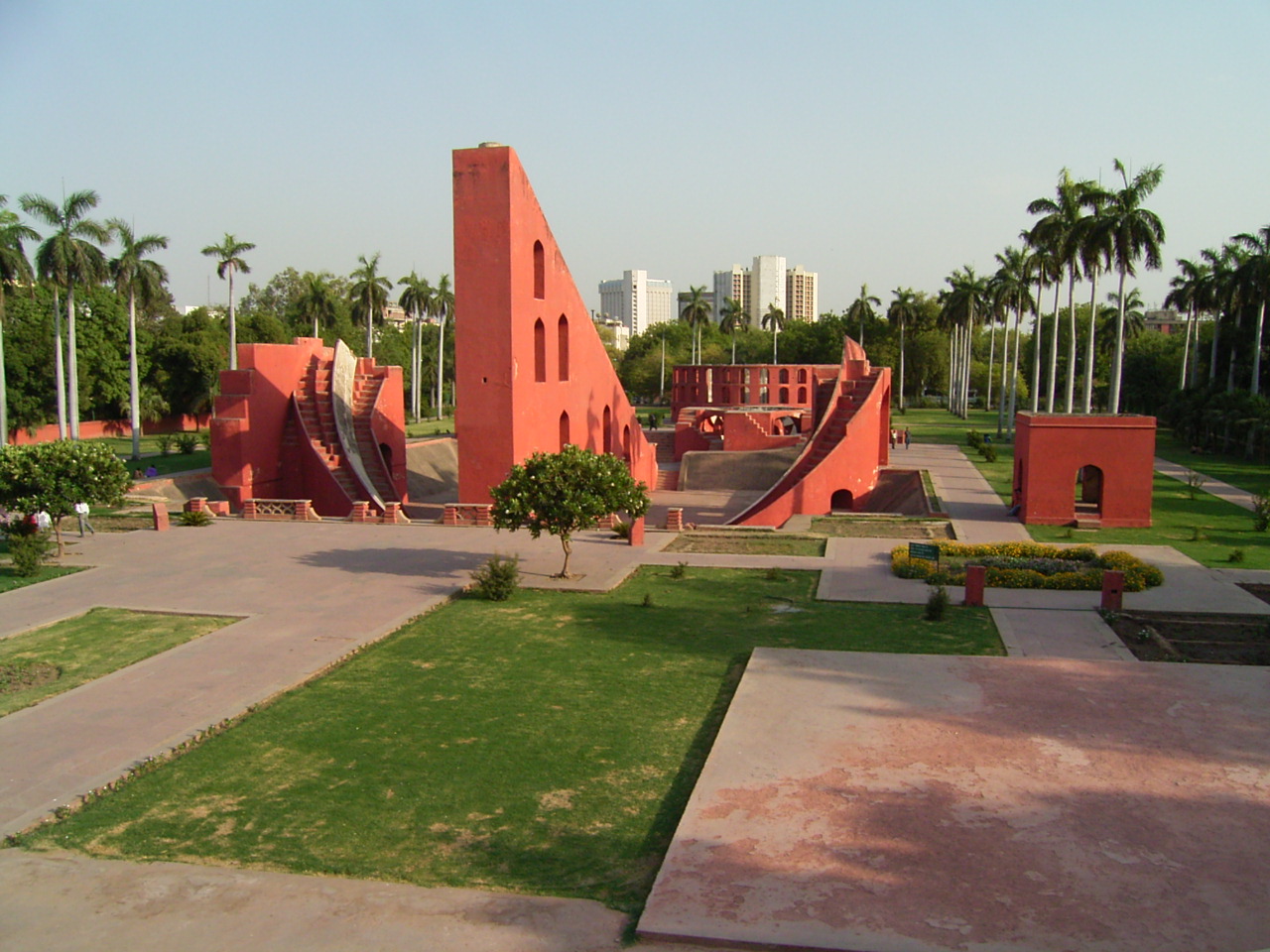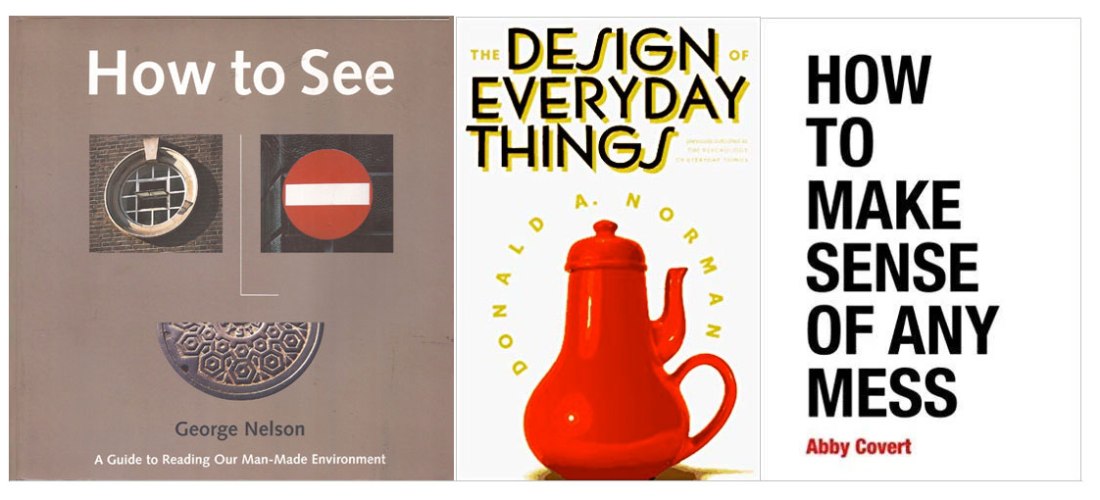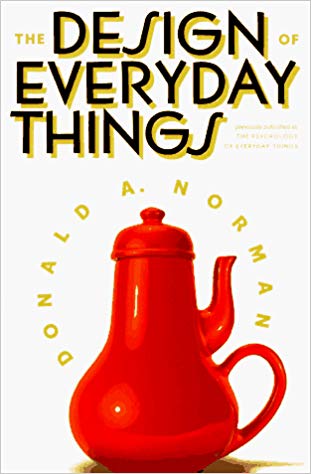It can be hard to explain what design even is. It is used as noun and a verb, it applies to making things look good but is also about defining how they work. It applies to new tech and media (often called user experience) but also to how our homes, streets and towns are designed (often called interior design, architecture, and urban planning). It is a big, complicated subject. And there’s no great introductory book. At least not yet.
Books are often an excellent solution for problems like this – you can give someone a 2 or 4 hour experience that explains the whole thing in one self contained narrative.
The goal of the the book I’m working on, and that this website is for, is to write that book for Design. To make something designers of different specializations feel comfortable as the introduction to their coworkers or families for what they do.
Many fields have well known books that solve this problem. They’re often called primer books. For example: Astrophysics for People in a Hurry, By Neil deGrasse-Tyson. Complications: A Surgeon’s Notes on an Imperfect Science by Atul Gawande. The Consolations of Philosophy, by Alain De Botton. The titles themselves self describe the purpose: written for anyone, with any background, and invites them in to an important world, without expecting them (but likely hoping) to read more on the subject.
The world of design has few books like this. Most books about design are written for other designers, or people who want to become designers. Or are narrowly focused one on kind of design.
In all my research (see reading list) here are the four books that work as the best introduction to what design is with my critique on their limitations.
1. How To See: A Guide to Reading Our Man Made Environment, George Nelson
This book fell off the map of the design world in the 80s, but it’s among the best single books I’ve found that explains Design – in all its forms, with the intent on inviting people in (look at the fun cover!) to see the world and ask better questions of it. It’s short, it uses images to tell the story, and operates mostly on the reader’s turf: the things they see and experience in their daily lives.
The even more obscure Why Design?, by Slafer & Cahill is perhaps a better book. Written in 1995 by the Smithsonian Building Museum staff as part of an exhibit, it’s mostly unknown today. But it is SO GOOD. Smart, well written, it takes on politics and power as integral to how design happens. As well as inclusivity, bias, aesthetics, process… you name it. It was written for teenagers, but you wouldn’t know that If I didn’t tell you – it does not pull any punches. However, the format is mostly exercises and checklists, there’s no digital edition, and its a large-sized print book, which all contribute against making it an easy recommendation for most readers.
2. Design of Everyday Things, Don Norman
This book is referenced, and used in more intro to design courses, than almost any other book. When it was first released as the Psychology of Everyday Things, it wasn’t a huge hit, but it earned a great reputation over time and earned its way to become a classic. It focuses on usability, and how cognitive psychology explains why things we use are hard or easy to use. And the second edition does a better job of exploring why businesses and organizations fail to do a good job, and shores up the first editions lack of coverage of aesthetics.
The downside for the goal of “the one book” is the book goes deep. It’s meant for someone who is going after a degree in psychology or design rather than a broad intro book. It has detailed chapters on how memory, perception, affordances and other aspects of usability, more than people who are not designers need to know. Depending on who the reader is, there are better first books.
3. How To Make Sense of Any Mess, Abby Covert
This single book is the best embodiment of practicing what designers preach in the form of a book that I know. It’s simple. It’s clear. It’s so thoughtfully written. It’s short. It’s relatable. It’s inviting. And more than anything else it leaves the reader asking many great questions and wanting to learn more. It’s more in the realm of Information Architecture, but makes that such a gentle boundary it works for anyone interested in seeing the world more like designers do.
The book’s goal is to explain information and how to organize it, which is absolutely a big part of design, but it doesn’t stretch out to the wide view of all the different kinds of design we have. If she had, I might not be working on this book at all.
4. Don’t Make Me Think, Steve Krug.
What’s so lovely about Krug’s approach is he truly believes in simplifying what can be a profession with lots of jargon and academic models. The title itself manifests the very goal of much of design: to remove friction. Where DMMT gets into trouble for our goals is it’s strictly about the web, it doesn’t really teach good design so much as how to reduce bad design, and it’s written at a tactical level, assuming the reader is going to be making or critiquing web pages. In some ways it’s a great first book for why design research is important, more than design itself.
Many books I’ve had recommended to me “as the one book” are just too narrow to one kind of design. The Non-Designers Design Book, by Robin Williams is purely about graphic design. Envisioning Information, by Edward Tufte, despite how often I’ve had it suggested as “the one” book, is aimed at complex information design, something few people actually do (it’s also physically hard to read: a surprisingly common problem with books by designers).
Many designers suggested books like The Elements of User Experience by Garett, Information Architecture for The Web, by Rosenfeld, Morville and Arango, Universal Principles of Design, by Lidwell and Holden, 100 Things Every Designer Needs to Know About People, by Weinschenk, Sketching User Experience, by Buxton, but all are clearly written for professional designers or tech-savvy folks. They mostly skip over the heavy lifting of explaining what design is or why it is more important than most people think it is.
Then there are the books I love and recommend in certain cases, but have too specific an aim to be a general first book. How Buildings Learn by Brand is so good in so many ways: surprising, eye-opening, deeply researched, highly visual, intellectually provocative. But its aim is purely at architecture and how it changes, and it’s not easy for the uninitiated to generalize the lessons here. Papanek’s Design for The Real World is so good, but can’t make up its mind if it’s for designers or for everyone else. He writes very well and is funny, but switches from “manifesto for all” to tactics like “tips on brainstorming” almost every other chapter.
Take a look at my reading list. If I missed a great primer book on another subject that I should study, or you have a suggestion for something that rivals a book on the list above, please leave a comment. Thanks.















